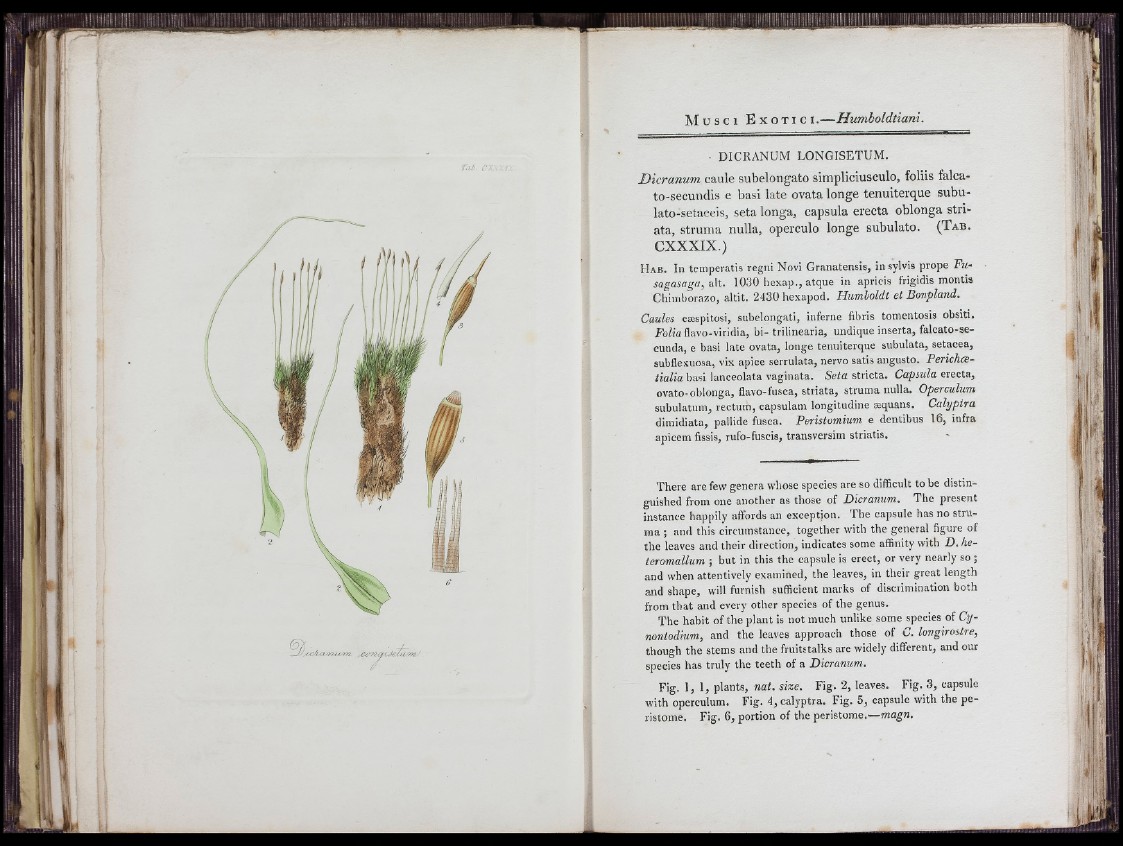
M.
'nxzon yCo'??aLJ€ia/???. '
I
■ DICRANUM LONGISETUM.
Dicranum caule subelongato simpliciusculo, foliis falcato
secundis e basi late ovata longe tenuiterque subu-
lato-setaceis, seta longa, capsula erecta oblonga striata,
struma nulla, operculo longe subulato. (Tab.
CXXXIX.)
Hab. In temperatis regni Novi Granatensis, insylvis prope Fu~
sagasaga, a\t. 1030 hexap,, atque in apricis frigidis montis
Chimborazo, altit. 2430 hexapod. Humloldt el Bonpland.
Caules cæspitosi, subelongati, inferne fibris tomentosis obsiti.
Folia flavo-viridia, bi- trilinearia, undique inserta, falcato-secunda,
e basi late ovata, longe tenuiterque subulata, setacea,
subflexuosa, vix apice serrulata, nervo satis angusto. Perichcetialia
basi lanceolata vaginata. Seta strid a . Capsula erecta,
ovato-oblonga, flavo-fusca, striata, struma nulla. Operculum
subulatum, rectum, capsulan! longitudine æquans. Calyptra
dimidiata, pallide fusca. Peristomium e dentibus 16, infra
apicem fissis, rufo-fuscis, transversim striatis.
There are few genera whose species are so difficult to be distinguished
from one another as those of Dicranum. The present
instance happily affords an exception. The capsule has no struma
; and this circumstance, together with the general figure of
the leaves and their direction, indicates some affinity with D, ke-
teromallum ; but in this the capsule is erect, or very nearly so ;
and when attentively examined, the leaves, in their great length
and shape, will furnish sufficient marks of discrimination both
from that and every other species of the genus.
The habit of the plant is not much unlike some species of Cy-
nontodium, and the leaves approach those of C. longiroslre,
though the stems and the fruitstalks are widely different, and our
species has truly the teeth of a Dicranum.
Fig. 1,1, plants, nat. size. Fig. 2, leaves. Fig. 3, capsule
with operculum. Fig. 4, calyptra. Fig. 5, capsule with the peristome.
Fig. 6, portion of the peristome.—magn.
:
f
( L
I I